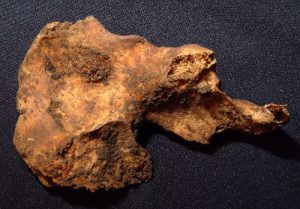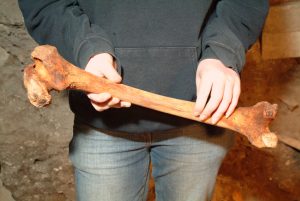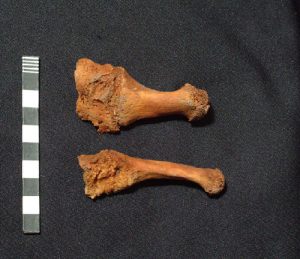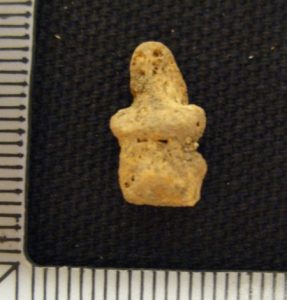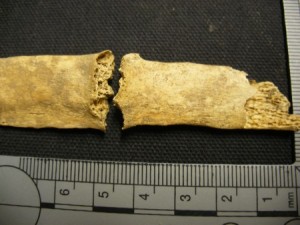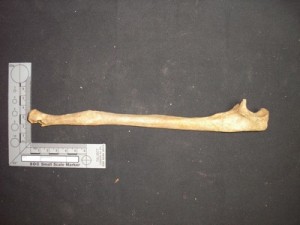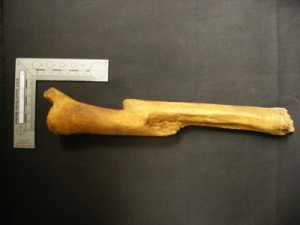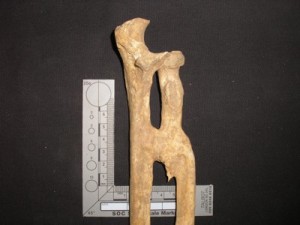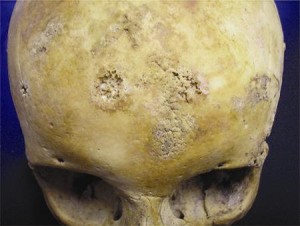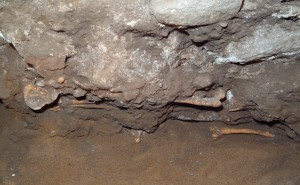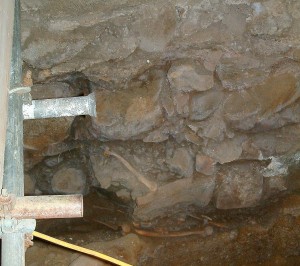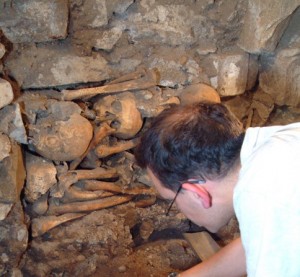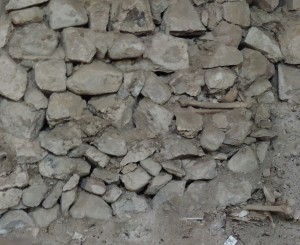Archaeology is not just digging up bones and other artefacts. Sometimes, it can throw up some interesting ‘whodunit’ questions. This post reports on just such an instance. The osteaoarchaeologist, Paul Duffy, while carrying out the detailed analysis of the bones uncovered during the archaeological dig in 2006, came across severe injuries on the upper left leg of a man. From the evidence he was aged perhaps in his early 30s. A view of the lower part of his femur, just above the knee, is shown in the first photograph.
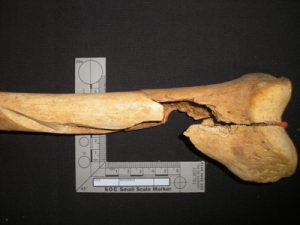
The most obvious thing is major damage and breaking of the bone. Additionally there had been no healing of the fractures, which suggests that he died around the time the injury was inflicted. A closer look shows that there is a deep blade wound (shown in close-up in the second photograph).
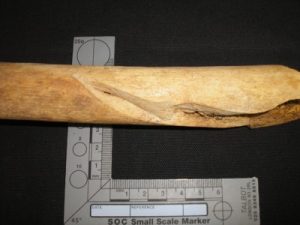
This damage is characteristic of a ‘chop’ type of injury. This would also have severed blood vessels, muscles, tendons and nerves and no doubt there would have been severe bleeding. This man would have experienced extreme shock. Together these factors could well have been the cause of his death.
So how did this happen? The third photograph shows a different view of the same injury where the shattering of the lower part of the femur is more obvious.
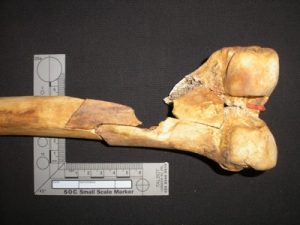
This would have required considerable force and would have come from behind. A ‘reconstruction’ is shown in the last photograph indicating that the injuries are consistent with a blow to the lower part of the upper leg. There is, obviously, no direct evidence, but it is most likely that the unfortunate man was attacked from the rear, perhaps as he was running away from a would-be attacker or a fight or battle.
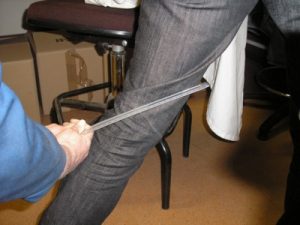
We are indebted to Paul Duffy for the detective work – and all the studies on the bones. No researcher was injured in the reconstruction! Paul is director of Brandanii Archaeology and Heritage, Bute, which can be accessed on Twitter and Facebook at present whilst their website is refreshed. The photographs are copyright Aberdeen Art Gallery & Museums Collections and are used with permission.
